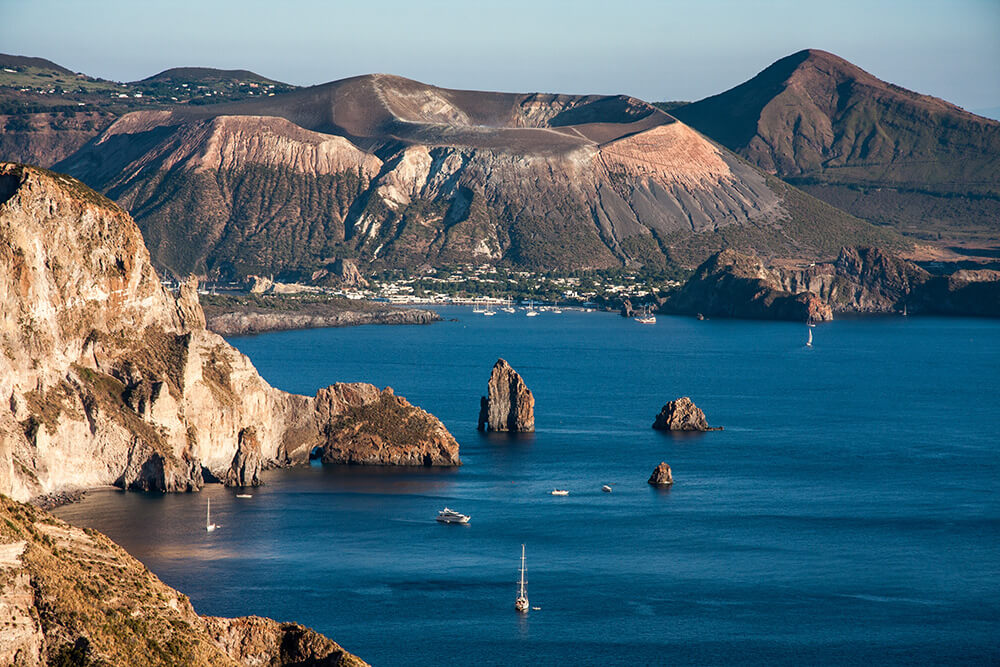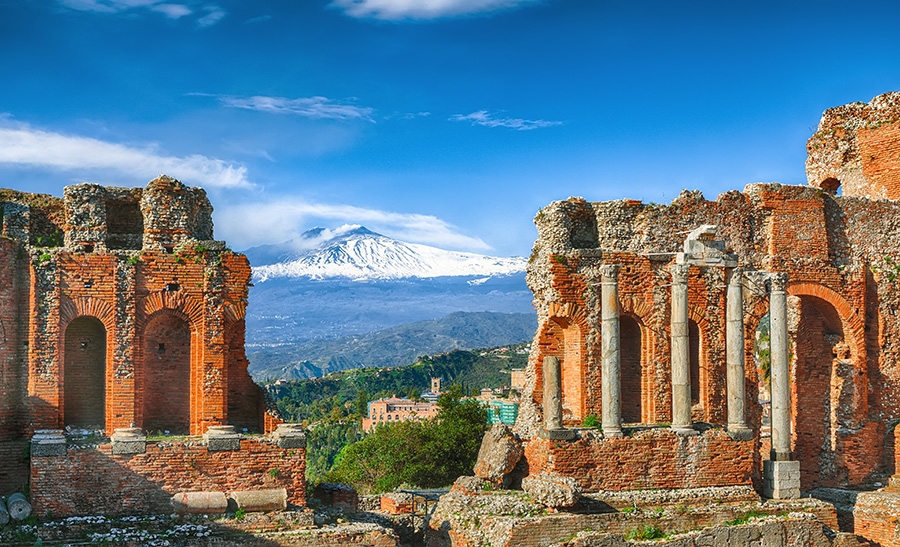Situated in a strategically important location, between the Strait of Gibraltar and the Suez Canal, and almost at the center of the Mediterranean, Sicily serves as a link between East and West, as well as between Europe and Africa.
Sicily is the largest and most densely populated island in the Mediterranean Sea, and the southernmost region in Italy. It covers an area of 25,708 sq km and has 5.2 million inhabitants. It is separated from mainland Italy by the Strait of Messina (3km at its narrowest point), and from Africa, the coast of which lies only 140 km far from the island, by the Sicilian Channel.
Sicily has a strategically important position half way between the strait of Gibraltar and the Suez Canal, bridging east and west, Europe and Africa. Its strategic location has attracted invaders and colonizers who have left so many impressive buildings, amazing monuments and unique works of art on the island that Sicily has been called open air museum.
In shape Sicily is roughly triangular, whence the ancient poetical name of Trinacria or Triquetra (three-cornered island).
The Capital
The island capital is Palermo, a lively city full of style, culture and charm, which with around 800,000 inhabitants, is the fifth largest city in Italy after Rome, Milan, Naples and Turin.
The millennia-long history of the city is attested by its extremely rich and varied artistic and architectural heritage: Punic walls, remains of Roman villas, delightful Arabic dwellings, stunning Norman churches, sumptuous baroque squares, churches, and palazzi, neoclassical theatres and lovely art nouveau villas.

The Islands
A number of smaller picturesque islands lie off the coast Sicily: to the north the Aeolian islands (Vulcano, Lipari, Salina, Filicudi, Alicudi, Panarea and Stromboli) and Ustica, to the West the Egadi islands (Levanzo, Favignana and Marettimo), and to the south the Pelagie islands (Linosa and Lampedusa) and Pantelleria.
Coastlines
Sicily is bounded by three different seas: the Mediterranean, the Tyrrhenian, and the Ionian, and boasts 1.039 Km of stunning coastline. The Tyrrhenian coast to the north is mainly rocky, ranging from high breathtaking sheer limestone cliffs to beautiful tiny coves with crystal clear waters.
To the south long, magnificent sandy beaches and wetlands stretch along the Mediterranean shore whereas along the Ionian coast to the east rocky cliffs alternate with long golden sandy beaches. Sicily offers the visitor the greatest imaginable variety of environments and landscape.

Mount Etna
The island’s highest mountain (about 3,330 m), and most awesome, dominates eastern Sicily. Still active, it is the biggest volcano in Europe, its eruptions are undoubtfully a once-in-a-lifetime experience, for those who are enough lucky to witness them.
Mountain ranges
Along the Northern coast, from east to west, rise Peloritani and Nebrodi and picturesque Madonie mountains, some of whose peaks reach 2,000 m.
The Southeast corner comprises a series of high lava, sandstone and above all limestone plateaus, and features a number of impressive gorges carved out through the centuries by water erosion. The interior part of the island is mainly hills and mountains.